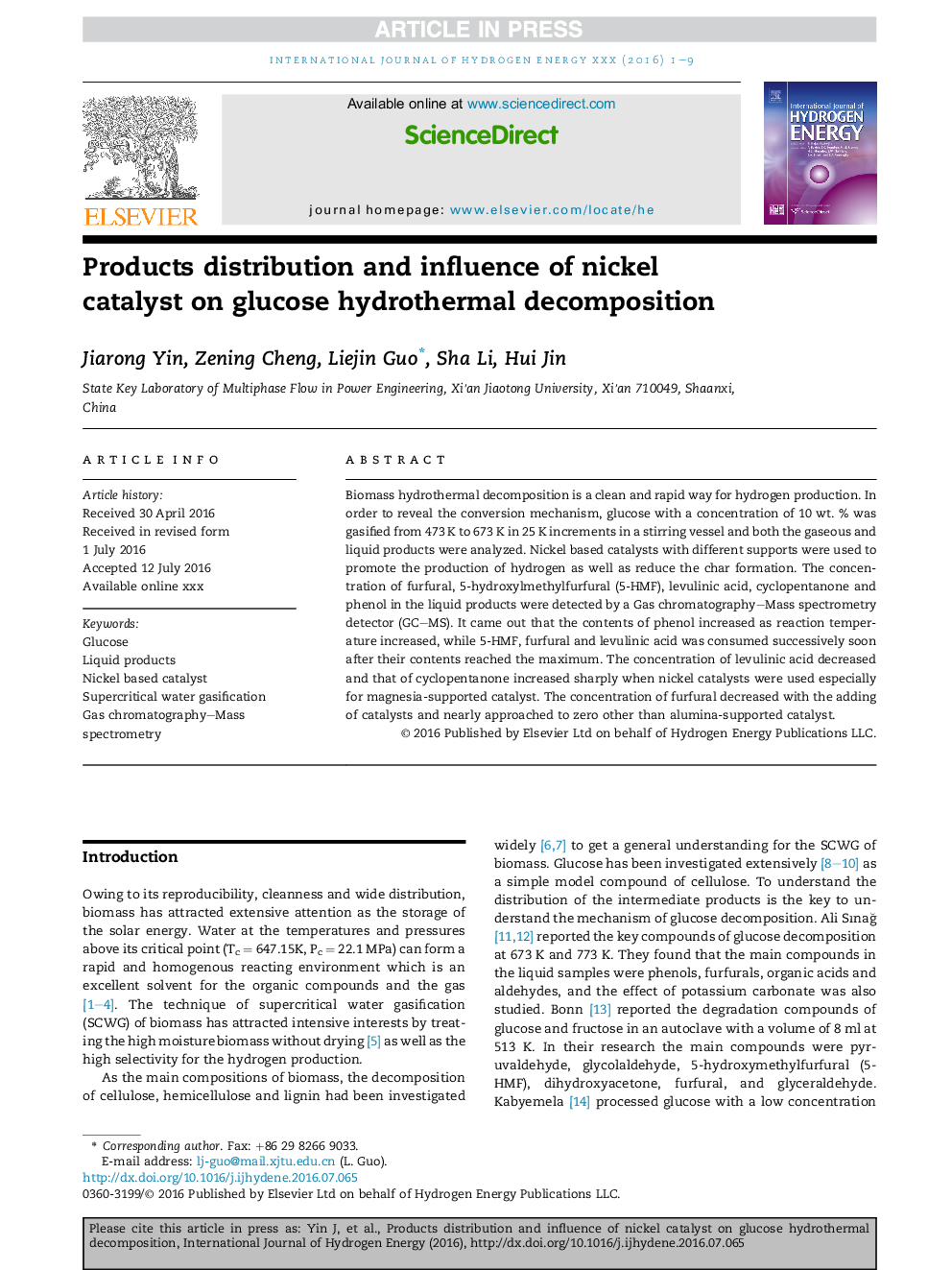| Article ID | Journal | Published Year | Pages | File Type |
|---|---|---|---|---|
| 5146380 | International Journal of Hydrogen Energy | 2017 | 9 Pages |
Abstract
Biomass hydrothermal decomposition is a clean and rapid way for hydrogen production. In order to reveal the conversion mechanism, glucose with a concentration of 10Â wt. % was gasified from 473Â K to 673Â K in 25Â K increments in a stirring vessel and both the gaseous and liquid products were analyzed. Nickel based catalysts with different supports were used to promote the production of hydrogen as well as reduce the char formation. The concentration of furfural, 5-hydroxylmethylfurfural (5-HMF), levulinic acid, cyclopentanone and phenol in the liquid products were detected by a Gas chromatography-Mass spectrometry detector (GC-MS). It came out that the contents of phenol increased as reaction temperature increased, while 5-HMF, furfural and levulinic acid was consumed successively soon after their contents reached the maximum. The concentration of levulinic acid decreased and that of cyclopentanone increased sharply when nickel catalysts were used especially for magnesia-supported catalyst. The concentration of furfural decreased with the adding of catalysts and nearly approached to zero other than alumina-supported catalyst.
Keywords
Related Topics
Physical Sciences and Engineering
Chemistry
Electrochemistry
Authors
Jiarong Yin, Zening Cheng, Liejin Guo, Sha Li, Hui Jin,
